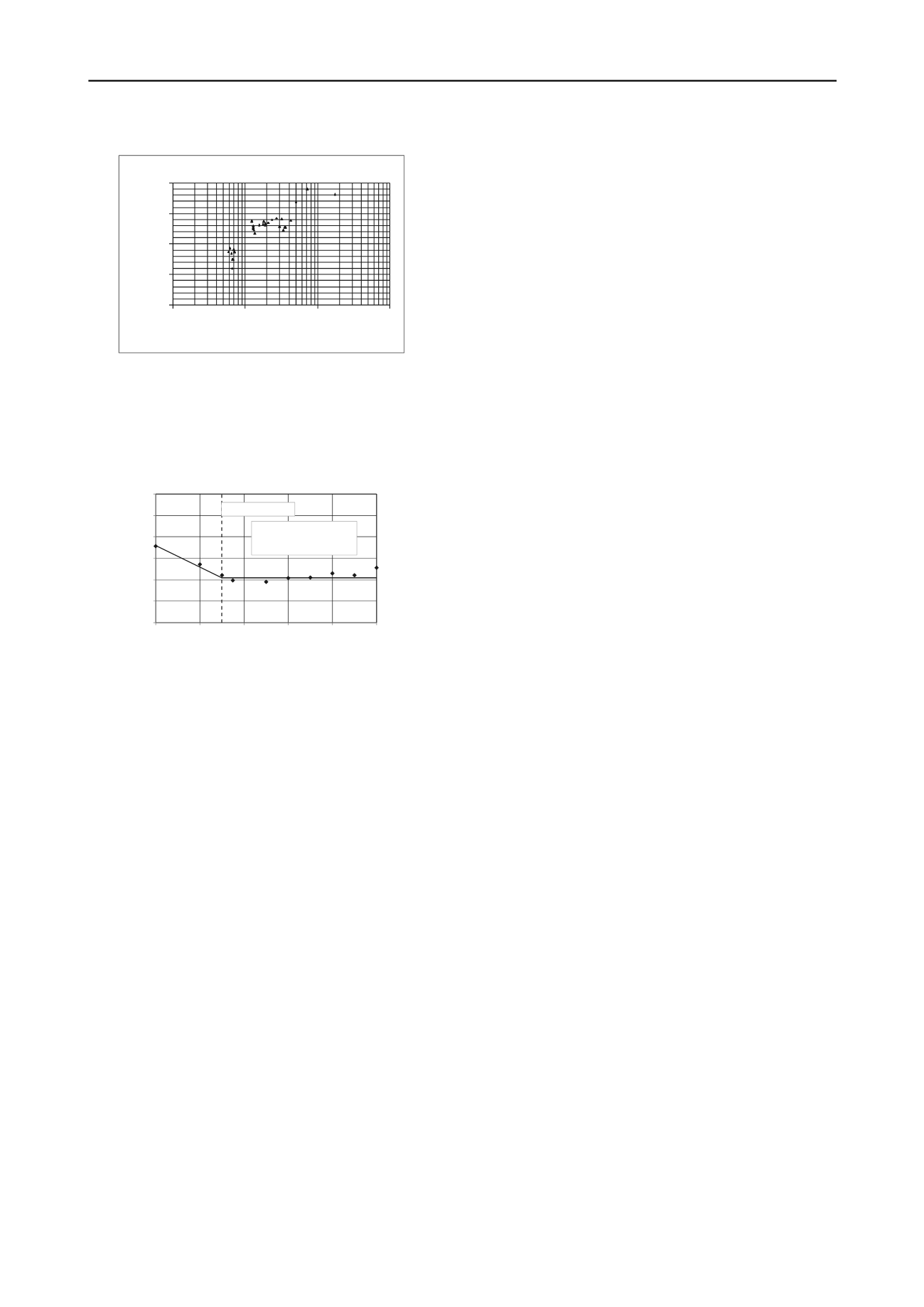
1542
Proceedings of the 18
th
International Conference on Soil Mechanics and Geotechnical Engineering, Paris 2013
Duke C.M. and Leeds D.J. 1963. Response of Soils, Foundations and
Earth Structures to the Chilean Earthquake of 1960. Bulletin of the
Seismological Society of America 53 (6), 309-357.
0.001
0.01
0.1
1
0
10
20
30
40
Shear Strain, %
Damping Ratio, %
Damping Ratio Reduction Curve
Erten D. and Maher M.H. 1995. Cyclic Undrained Behavior of Silty
Sand. Soil Dynamics and Earthquake Engineering 14, 115-123.
Ishihara K., Tsuchiya H., Huang, Y. and Kamada K. 2001. Recent
studies on liquefaction resistance of sand effect of saturation.
Proceedings 4th International Conference Recent Advances in
Geotechnical Earthquake Engineering and Soil Dynamics, Keynote
Lecture, San Diego. 1-7.
Ishihara K., Troncoso J.H., Yasuhiro K. and Yoshiki T. 1980. Cyclic
Strength Characteristics of Tailings Materials. Soils and
Foundations 20 (4), 127-142.
Kishida H. 1969. Characteristics of Liquefied Sands during Mino-
Owari, Tohnankai, and Fukui Earthquakes. Soils and Foundations
9(1), 75-92.
Figure 6. Variation of damping ratio with shear strain for Sand-01.
Effect of nonplastic-silt content in Sand-02 is shown in
Figure 7. It is found that upto 30% silt, liquefaction resistance
of sand decrease with increasing silt content. Above 30% silt,
liquefaction resistance of soil is nearly constant. This result is
somewhat similar to Dash and Sitharam (2009). However this
result is different with Polito and Martin II (2001).
Koester J.P. 1994. The Influence of fine type and content on cyclic
resistance. Ground Failure Under Seismic Conditions. Geotech
Special Publ. 44, ASCE, New York, 17-33.
Kokusho T. 1980. Cyclic triaxial test of dynamic soil properties for
wide strain range. Soils and Foundations 20, 45–60.
Marshall L.S. et al. 1976. Cyclic Triaxial Strength of Standard Test
Sand. Journal of The Field Geotechnical Engineering Division 102
(5).
Okamura M. and Sog. Y. 2006. Effects of pore fluid compressibility on
liquefaction resistance of partially saturated sand. Soils and
Foundations 46(5), 695-700.
0.00
0.05
0.10
0.15
0.20
0.25
0.30
0
20
40
60
80
Cyclic StrengthRatio
Silt Content (%)
100
LimitingFineContent
AxialStrain±3%,at 20Cycles
Effectivestress=100
kPa,Dr=60%,
f =
1Hz
Polito C.P. and Martin II J.R. 2001. Effects of Nonplastic Fines on the
Liquefaction Resistance of Sands. Journal of Geotechnical and
Geoenvironmental Engineering 127 (5), 408-415.
Raghunandan M.E. and Ashish J. 2011. Properties of De-Saturated
Sand. EJGE 16, 109-123.
Seed H.B. and Idris I.M. 1967. An Analysis of Soil Liquefaction in
Niigata Earthquake. Journal of the Soil Mechanics and Foundation
Engineers 93 (3), 83-108.
Seed H.B. and Lee K.L. 1966. Liquefaction of Saturated Sands under
Seismic Loading. Proceeding of ASCE 92 (5), 1199-1218.
Figure 7. Cyclic Strength Ratio variation of Sand-02 with silt
content.
Shen C.K., Vrymoed J.L. & Uyeno C.K. 1977. The Effect of Fines on
Liquefaction of Sands.9th International Conference on Soil
Mechanics and Foundation Engineering 281-285.
Sherif M.A. Ishibashi I. and Tsuchiya C. 1977. Saturation Effects on
Initial Soil Liquefaction. Journal of the Geotechnical Engineering
Division ASCE 103 (8).
5 CONCLUSIONS
Cyclic strength ratio, shear modulus reduction curve and
damping reduction curve were determined for a local fine sand
containing 11% silt. Wet tamping method was used to prepare
specimen of relative density 55%. Cyclic strenght ratio at 50
kPa confining pressure was found to be 0.315. Shear modulus
decreased with increasing shear strain and damping ratio
increased with increasing shear strain. Most interesting finding
is that upto 30% silt, liquefaction resistance of sand decrease
with increasing silt content. Above 30% silt, liquefaction
resistance of soil had insignificant variation with silt content.
Sitharam T.G., Govindaraju L. and Sridharan A. 2004a.Dynamic
properties and liquefaction potential of soils.current science 87
1370–1378.
Sitharam T.G., Govindaraju L. and Srinivasa Murthy B.R. 2004b.
Evaluation of liquefaction potential and dynamicproperties of silty
sand using cyclic triaxial testing.Geotech. Testing Journal ASTM
27, 1–7.
Troncoso J.H. 1986. Critical State of Tailing Silty Sands for
Earthquake Loading. Soil Dynamics and Earthquake Engineering 5
(3)248-252.
Tsuchida H. 1970. Prediction and Countermeasure Against the
Liquefaction in Sand Deposits. Abstract of the Seminar in the Port
and Harbor Research Institute 3.1-3.33.
Xenaki V.C. and Athanasopoulos G.A. 2003. Liquefaction Resistance
of Sand-Mixtures: an Experinx:ntal Investigation of the Effect of
Fines. Soil Dynamics and Earthquake Engineering 23, 183-194.
6 REFERENCES
ASTM Standard D 3999-91. 2003. Test Method for the Determination
of the Modulus and Damping properties of Soils Using the Cyclic
Triaxial Apparatus. Annual Book of ASTM Standards, ASTM
International, West Conshohocken, PA.
Xia H. and Hu T. 1991. Effects of saturation and back pressure on sand
liquefaction. Journal of Geotechnical Engineers, 117 (9) 1347–
1362.
Amini F. & Qi G.Z. 2000. Liquefaction Testing of Stratified Silty
Sands. Journal of Geotechnical and Geo-environmental
Engineering 126 (3), 208-217.
Braja M.D., Purl V.K. and Prakash S. 1999. Liquefaction of Silty Soils.
Earthquake Geotechnical Engineering 619-623.
Choudhary S.S., Maheshwari B.K. and Amir Kaynia M. 2010.
Liquefaction Resistance of Solani Sand under Cyclic Loads. Indian
Geotechnical Conference at IIT, Bombay. 115-118.
Das H.K. and Sitharam T.G. 2009. Undrained Cyclic Pore Pressure
Response of Sand-Silt Mixtures: Effect of Nonplastic Fines and
Other Parameters, Geotech Geol Eng 27, 501-517.
Dinesh S.V., Sitharam T.G and Vinod J.S. 2004. Dynamic properties
and liquefaction behavior of granular materials using discrete
element Method. Special section: geotechnics and earthquake
hazards, current science 87(10), 1379 -1387.


